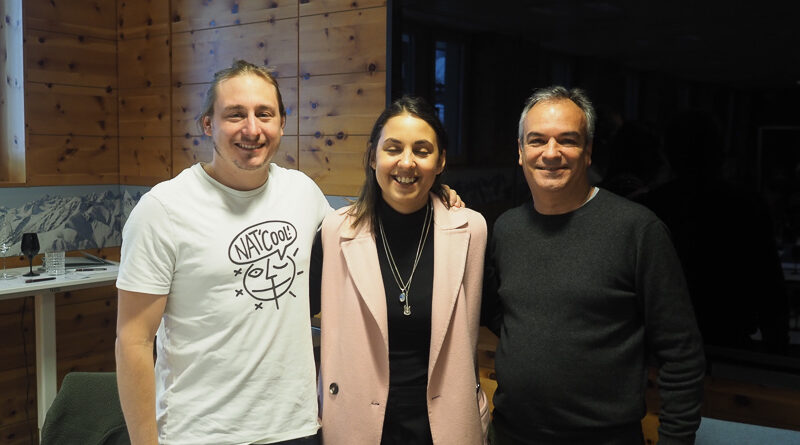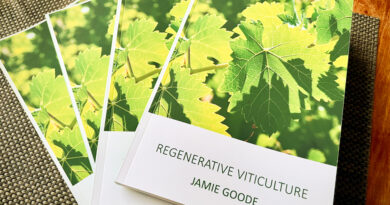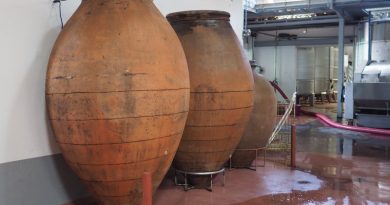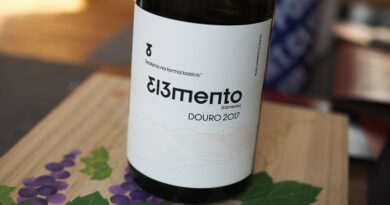Port and Madeira: a fortified discussion with Niepoort and Barbeito
As part of the program at the 2023 Arlberg Weinberg festival, sommelier Amanda Wassmer-Bulgin compered this session with Ricardo Freitas of Barbeito (right) and Daniel Niepoort (left) of Niepoort, who both talked about the fortified wines they make, with a couple of examples of each to taste.
Barbeito and Madeira
Ricardo Freitas is a third generation Madeira producer, and his family firm Barbeito is widely regarded as the top producer on the island. He began with a historical perspective. The first vineyards on Madeira were planted in 1425. There’s mention of Malvasia Candida in 1480 and by then there were already lots of vineyards around Funchal. From the economic point of view it’s around 1670 that wine became important for the island, eventually becoming the most important economic activity of Madiera.
At the beginning Madeira wasn’t a fortified wine: spirit additions began in the middle of the 18th Century. It was known then as the wine of the Americans. There are statistics showing that close to 75% of the wine drunk in the USA in the second half of the 18th century was Madeira. Madeira still exists for the 75 years until 1825 when it was the most popular wine in the USA.
Madeira was shipped and suffered oxidation on the trips, and this was considered positive for the wines. Madeira now is much more oxidised than it was then: it used to be a Claret style table wine and the slight oxidation made it easier to drink for everyone.
The Madeira business was dominated by the English, and they had a lot of privileges. The Portuguese government supported them and they dominated throughout the 18th and early 19th century. The wines were made by Portuguese vineyard owners, and the English were buying the wines and shipping them, most to the Americans. The first blenders in Madeira were the Americans, who had a deep knowledge of the wines. They sent letters with recipes and the English shippers went to the vineyards, bought wines and blended them, and then shipped the wines.
The geographic position of Madeira is important. All the ships from Europe crossing the Atlantic stopped in Madeira for their last supplies. All the empty space was filled with casks of wine from Madeira. Madeira was the second demarcated region in Portugal after Douro. The wines were classified in three quality levels: wines that could be exported, those for sailor’s consumption, and those to be consumed locally. And wines from the north of the island could never be mixed with wines from the south (thought of as the best wines).
Madeira had a huge, long black period of 100 years, says Ricardo, and especially between the 1940s and 1970s it was associated with bulk-shipped cooking wine. He still faced this in Barbeito when he worked in the company in the summer holidays. They were also involved in the bulk business, and in 1991 when he started full-time they were the first company to stop doing bulk. They lived through their inventories, and they were running out. The bulk business means sometimes you lose money sending the wine, and if they had carried on with it they would have been bankrupt quickly. They decided to stop bulk, just keep their good customers, and then give themselves 12 years to recover everything and replenish their inventories, as well as buying old wines from other producers and growers to fill the cellar. Many changes that he made were without his mother’s knowledge. He says he was wasting so much time discussing ideas with her, and she kept saying be careful ten times a day, so he began making changes without telling her. It took five years to convince her they should stop adding caramel to the wines, and in 2001 he just did it without asking her. People in the company said that she would find out. But he said in six months she will find out and then we can’t go back, but she found out in 3 days.
Barbeito’s stock average is 1.2 million litres, and they sell 180-190 000 litres a year. It is a lot of money tied up in inventory, but it is the only way to have a good quality product. If Madeira isn’t high quality it’s not worth making, he says. The quality comes from ageing and the differences are in the blend.
In 2017 he started making some table wines, but it was because he wanted to prove to all the other still wine producers in the island that they were doing it the wrong way. A plant produces 2.5 kilos but you can’t make a still wine from these yields. He also has the best barrels, such as François Frères. But this flirtation with table wines was never intended to cover lower sales in the fortifieds. In the last 15 years he’s seen no decrease in fortified sales.
There was a big change in the mentality of all producers around the 1990s. They started seeing that only making bulk wine wouldn’t work: they began to stop bulk sales in 2001, a decade after Ricardo, who worked the niche markets before everyone else. Everyone is now working in the same direction, and now Madeira has a very good image, he says. There are just seven producers and they are working in the same direction, and the best moment for Madeira has been in the last five years.
‘In 1991 I thought Barbeito wines were very boring,’ he says. ‘The style of all companies was the same: very sweet, lacking acidity.’ Ricardo decided that his wines needed to be purer. ‘I created a new style in Madeira: it’s very pure.’ When he started the wines sold to consumers whose average age was 60; now it is 40.
The cheapest grapes are Tinta Negra at €1.2 per kilo, but Sercial and Malvasia sell for €2.4/kg. But Ricardo also pays 3 salaries a month for people to support the growers he buys from – this wouldn’t be necessary under normal circumstances but is caused by labour shortages on the island. It makes it expensive to make Madeira.

Vinhos Barbeito Sercial Curtimenta Colheita 2014
This is the first skin-contact Sercial in Madeira. Just 1000 kg of grapes used here, with three months of skin contact after fortification. Once a week it was all mixed by hand. Then it was basket-pressed. Beautiful complexity on the nose: grapefruit, marmalade, pear and spice. The palate is concentrated, pure, fresh and intense with nice acidity and very fine spicy detail, with lime, apricot, marmalade and even a touch of honey. Some tannic structure here as well as acidity, giving a sense of freshness and brightness, as well as some sweetness. Complex for a young wine, and this has a long future ahead of it. There’s a salty minerality on the finish. 95/100

Vinhos Barbeito Vedelho Frasqueira 1981
This comes from 35 000 litres of Madeira from an old family that had built up, but which were in danger of being destroyed by not being looked after properly. But the guy who built this up was also supplying Barbeito. He’d made his own wines, and so Ricardo used these high acidity wines (50%) with his own wines aged in his cellars (50%). The vineyards are located 150-200 m from the sea. His warehouse was next to the sea, and with the vineyards this gave the wines some salinity. Astonishing complexity on the nose. Has wax, pear, apple and spice, with old furniture and some honey notes. The palate is complex and intense with some structure to the powerful wood, furniture polish, spice and orange peel. It’s really powerful with high acidity, showing great complexity and focus. It’s sweet, but this is beautifully countered by some structure and keen acidity. Salty, intense and quite profound. So fresh. 98/100
Niepoort and Port
Daniel Niepoort spoke about the history of Port. We have Port because of the English, he says. The Douro has been making wine for 2000 years, but Port with fortification has only existed since the 18th century. The Douro was one of the first demarcated regions (this is shared with Tokaji, and the two are fighting it out for the title). Back then English merchants were trading both Port and textiles from Portugal. One year was very hot and the wine didn’t complete fermentation, and the English liked this a lot. To help the sweet wines survive the shipping they added a bit of brandy, and this is how Port started. The influential Baron Forrester famously wasn’t a fan of this new sweet fortified Port, but the English liked the sweeter wine and the alcohol protected it. Daniel’s father Dirk has tasted a Port from 1795, but it’s rare to fine very old Port surviving from this era.
Port now isn’t exactly the same as 100 years ago even though the process is very similar. There are over 300 different grape varieties, and mostly they are co-planted. This is a big difference from Madeira where everything is focused on grape varieties and styles. In Port this concept of having 10 or 20 different varieties co-planted gives you a lot of complexity. Port can be very extracted and heavy and a bit of a monster, but also something light and elegant.
Daniel began working with the family company and took part in blending the 2019 Vintage Port. ‘My father always talks about lightness and lower alcohol,’ he says, ‘but when it comes to Port it is the other way.’ In the blending session Daniel really liked a wine from Sousão but Dirk told him it was not a really good wine, just a fruity wine.
Today 85-100 000 pipes of Port are sold, and sales are decreasing slightly. So it is good that table wine from the Douro is taking off.
The grape growers used to make the Ports in the Douro, and then sell them. In the past, a Port house like Niepoort would buy these Ports, blend them and age them, but they wouldn’t actually do any winemaking. The trend now is that the Port houses do everything, even the winemaking: Niepoort are now doing everything in house, although they still buy grapes. But the old system with the grape growers has been very important in Port. The Nogueira family are master blenders who have been working with Niepoort since the 19th century, and they always write the name of the grower on the barrels.
When you have a family company you have to respect the past, but you can’t stand still, says Daniel. Dirk made changes his father wasn’t happy with, but without those changes Niepoort might not exist today.
Dirk started to work with his father in 1987, and they bought a winery. There were two worlds at the time: Gaia and the Douro. But Dirk decided to make table wine and he was opposed by his father, Rolf. In 1990 Dirk made his first table wine: Robustus. He made a few barrels, he went on a trip, and when he got back all the barrels were gone except one: his dad had given the wine away. He bottled the barrel, and a while later brought the wine to a lunch with a journalist. Dirk decanted the Robustus, the journalist tasted the wine while Dirk went to the toilet, and raved about it to Dirk’s dad. In 1991, Dirk began making Redoma.
Initially, many of the Portuguese weren’t keen on Douro table wines: they thought the region should be about Port. But without the table wines the region would be in trouble now. Wine also helps with cash flow and so helps the investment in Port, keeping stocks.
A great sweet wine starts sweet but finishes dry, says Daniel. Ricardo has acidity in Madeira, but we lack acidity in the Douro, he says. So they work with field blends, 100% stems, and for more than half of ports they still foot tread. ‘It is something special and makes a difference in the quality: we can extract a lot but don’t destroy the seeds.’
Vintage Port is the king of Ports, but there’s another category, Colheita, that they are focusing on (vintage-dated tawnies). How is it a Vintage Port bottled after two years is more expensive than a Colheita that spends 20 years in the pipe? They believe a lot in the colheita style, and also think that it is good to age in the bottle too. The English Port houses think a colheita is good to drink when bottled, but Niepoort thinks that bottling after 20 years and giving the wine another 20 years in bottle is great. The bottle can bring elegance. He adds that ageing costs: to age Port 20 years costs €35 per litre, according to his calculations.
In the Douro there’s a lot of controversy about the Beneficio. It is a good idea to keep value for the grape growers, says Daniel, but it’s also silly because people sell the paper. He doesn’t know what he should think about it because it is very complicated. Is it fair? You can make a great wine from an old vineyard and a great Port from a vineyard not far away but there is a big difference in price for the grapes? There’s too much politics. This system was made a long time ago for Port and now the reality is very different. It needs an update.
Niepoort have 100 hectares now and work organically with some biodynamic practice. Daniel says they are in the beginning of discovering what they can do in terms of best practice in the region. Sometimes the grapes they buy are better than their own grapes. The treasure in the Douro is old vineyards, and these are usually farmed by old people. There is a lot of lack of respect for this old knowledge. We can’t be black and white. Maybe they have to think about the bigger picture. Many of the problems in the Douro are self-made, not just because of climate change. But Daniel is sad that some youngsters don’t want to take over their family’s old vineyards, but would rather be instagrammers.
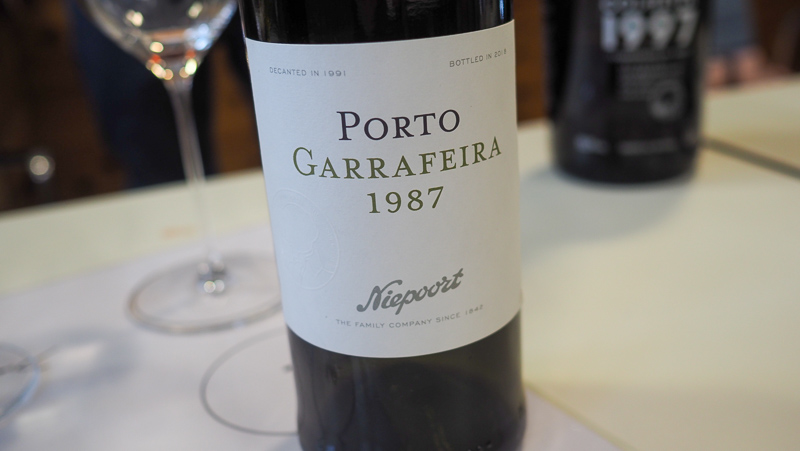
Niepoort Garrafeira 1987
This is a very special wine for Niepoort. Since last year it was finally an official Port category (it was previously in a grey zone). It’s a wine kept in big demi-johns. They are bottled after 4-5 years. It is one of the most elegant Ports, says Daniel. Then after a while it is bottled in small bottles. This went to demijohn in 1981 and went to small bottles in 2018. Some colour here: cherry red colour with a slight bricking to the rim. Nice freshness and elegance here: fine red cherries and some sweet liqueur-like raspberry notes. Warm and spicy with a sleek red fruit character and a touch of white pepper. Sleek and elegant with lovely finesse and still has lovely fruit character. Real beauty here with astonishing finesse. 97/100
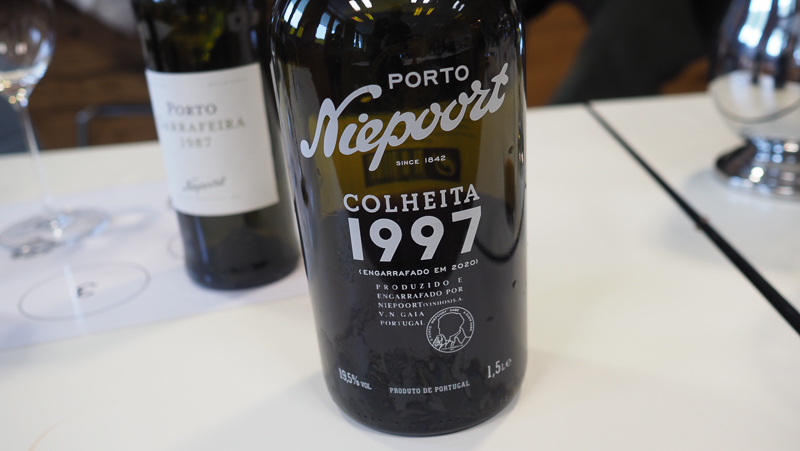
Niepoort Colheita 1997 (magnum)
This was bottled in 2020. Bronze/yellow colour with a hint of yellow and green to the rim. Warm, elegant nose with spice, raisin, some herbs and a touch of citrus peel. This is concentrated, very finely spiced and quite exotic with a lovely detailed quality to the sweet pear, apricot and raisin fruits. Superb elegance here with absolute purity. And simply delicious. 95/100

